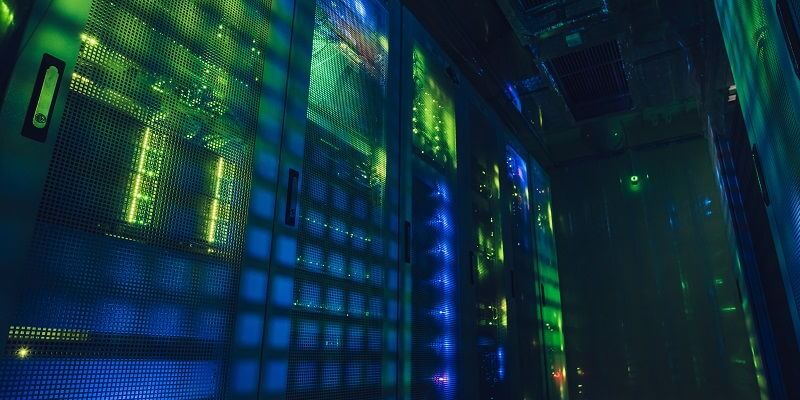In today’s digital era, data centers play a pivotal role in supporting the growing demand for data storage and processing. However, with this increased dependence on data centers comes the pressing need to prioritize energy efficiency and environmental responsibility. The technology industry as a whole is recognizing the importance of reducing carbon footprints, and data centers are no exception. This article explores how data centers are embracing sustainability by implementing Data Center Infrastructure Management (DCIM) tools and strategies.
Regulatory Goals in the Industry
Regulatory operators within the data centre industry have taken substantial steps towards achieving carbon neutrality. They have set clear objectives to be achieved by 2030. Recognizing the environmental impact of data centers, these operators have realized that urgent action is necessary to mitigate the sector’s carbon footprint. Thus, data centers have committed themselves to reducing greenhouse gas emissions and embracing sustainable practices.
Real-time charts and reports
Real-time monitoring is a critical component of data center management. With the help of DCIM tools, data centers can analyze and respond to operational issues promptly. Real-time charts and reports provide insights into power consumption, temperature levels, and overall performance. By leveraging this data, data center operators can identify and address minor problems before they escalate into more serious issues, ensuring optimum efficiency and reducing wastage.
DCIM and energy efficiency
DCIM introduces an opportunity for data centers to significantly reduce energy wastage by optimizing cooling processes. Through the utilization of sophisticated algorithms and real-time monitoring, DCIM tools provide insights on cooling efficiency, enabling data centers to implement smart cooling strategies. By taking into account thermal metrics, such as temperature differentials and airflow patterns, DCIM can optimize cooling resources, leading to reduced energy consumption and increased energy efficiency.
Performance standards and compliance
Maintaining high-performance standards and complying with industry regulations is essential for data centers. DCIM plays a crucial role in helping data centers meet these expectations. By monitoring critical parameters, such as power usage effectiveness (PUE) and infrastructure efficiency, DCIM ensures that data centers adhere to industry regulations. It also offers real-time alerts and notifications, allowing data center operators to take prompt corrective actions if performance falls below the defined standards.
Energy efficiency as the top objective
Maximizing energy efficiency is the prime objective for many data centers. With rising energy costs and environmental concerns, data center operators are driven to optimize their operations to reduce energy consumption and associated greenhouse gas emissions. DCIM tools provide data centers with detailed insights into energy usage, enabling them to identify areas of inefficiency and focus on implementing energy-saving strategies. This not only results in significant cost savings but also contributes to a greener, more environmentally sustainable future.
Identifying and addressing wasted energy
One of the remarkable aspects of DCIM is its ability to pinpoint the sources of wasted energy. By analyzing power distribution units, UPS systems, and IT equipment, DCIM can identify areas where energy is being consumed unnecessarily. This knowledge empowers data centers to make informed decisions and implement smart alternatives, such as upgrading to more energy-efficient equipment or optimizing workload distribution. By eliminating energy waste, data centers can effectively reduce their carbon footprint and contribute to a more sustainable future.
Eliminating idle and obsolete servers
Data centers often house a significant number of servers that may be idle or obsolete. These servers not only consume unnecessary energy but also occupy valuable physical space. DCIM tools enable data centers to identify and retire such servers, replacing them with more efficient and modern equipment. By streamlining the server infrastructure, data centers can reduce energy consumption, optimize resource utilization, and improve overall operational efficiency.
Industry leaders in sustainability
Several technology giants, including Google, Microsoft, Apple, and Facebook, have emerged as industry leaders in data center sustainability. These companies have invested extensively in cutting-edge technologies and have implemented innovative sustainability practices. From utilizing renewable energy sources to implementing advanced cooling techniques, these industry leaders serve as role models for other data centers worldwide. Their commitment to sustainability sets the stage for the entire industry, driving positive change and inspiring others to adopt green practices.
Optimum efficiency and environmental friendliness are no longer optional for data centers; they are imperative. Data center operators have embraced their environmental responsibility and are actively working towards reducing their carbon footprint. DCIM has proven to be a valuable tool in achieving these goals by enabling real-time monitoring, optimizing cooling processes, maintaining performance standards, and identifying and addressing wasted energy. As the industry moves towards a greener future, data centers must continue to prioritize sustainability and leverage advanced technologies like DCIM to ensure they remain at the forefront of efficiency and environmental friendliness.

